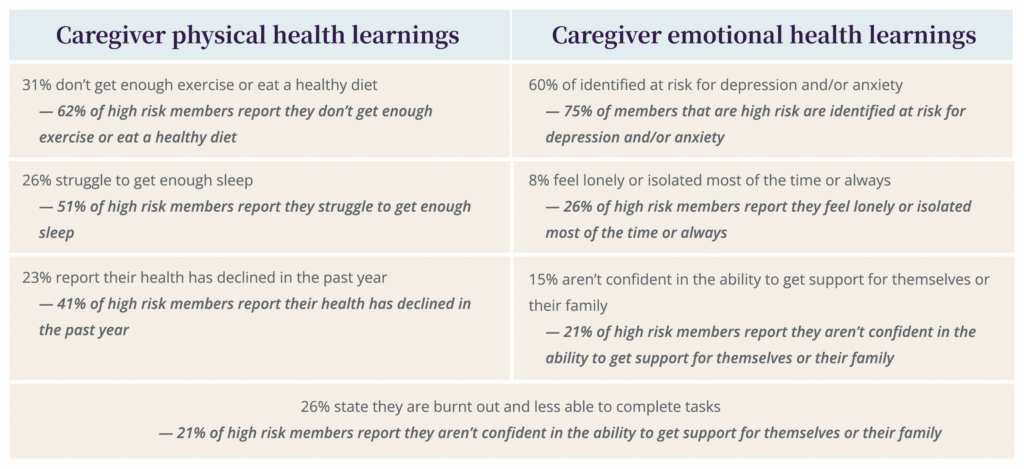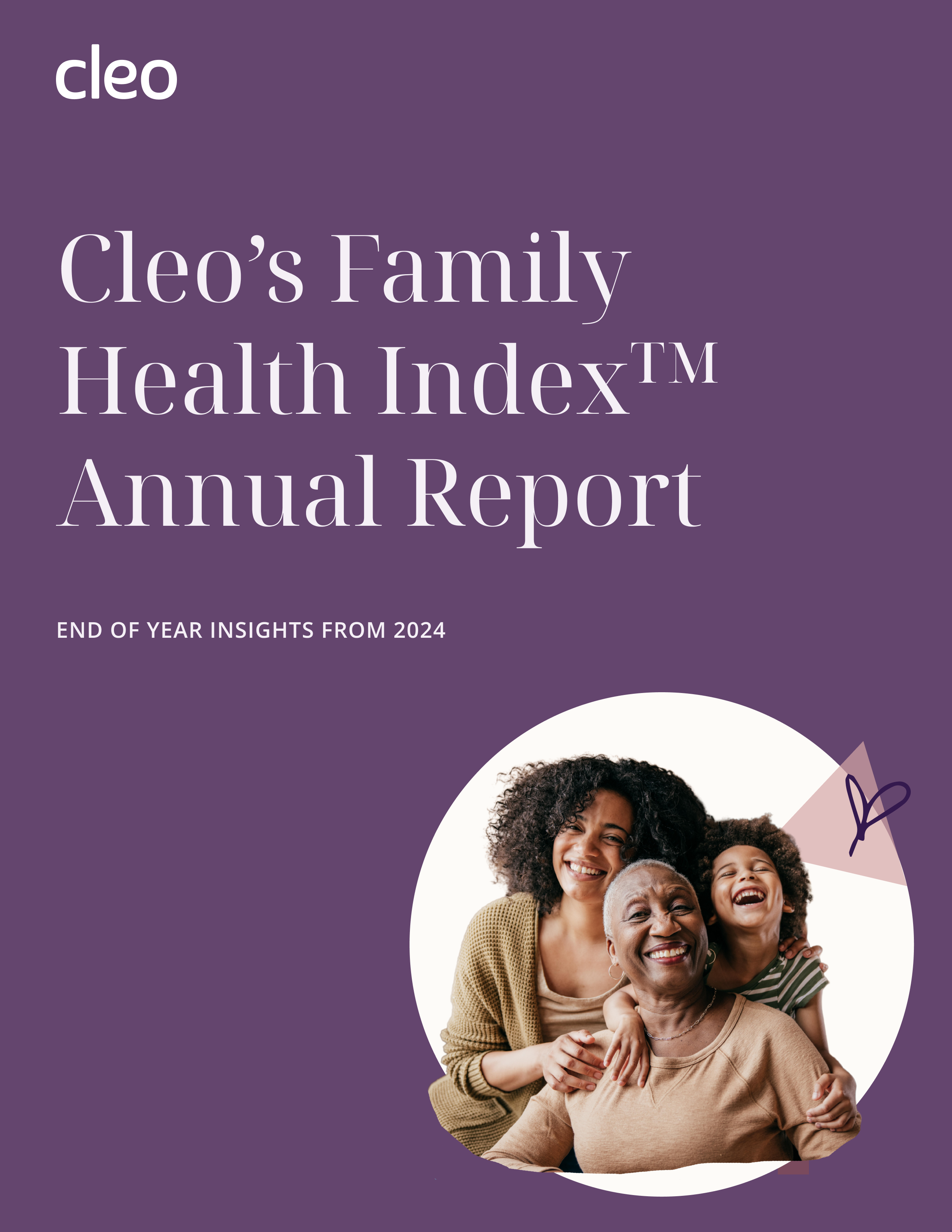Download the full Family Health Index Annual Report
Get your copy of key parenting and caregiving insights, to help your organization better support this essential population.
To drive proactive support for your employees or members, you first need to understand their needs.
Compared to the general population, caregivers — those caring for children, aging adults, or both — experience worse health outcomes, such as hypertension and depression. It does make sense, actually, as we know that caregivers tend to put their own self-care last. So, it’s imperative that employers and health plans are able to identify who their caregivers are and provide them with dedicated, personalized support.
But many caregivers don’t readily identify themselves, or hesitate to even call themselves a ‘caregiver,’ despite doing at least a part-time job’s worth of care support for a loved one.
So how can employers or health plans identify this population, and gauge what level and type of support they need to thrive?
Cleo’s Family Health Index is the only quantitative metric on the market that identifies parents and caregivers at greater risk of burnout and in need of timely intervention. By tracking changes in caregiver health over time, we provide targeted support to improve well-being, workplace engagement, and retention.
The 2nd Family Health Index Annual Report
The latest insights across thousands of working families reveal a few alarming statistics:
And the following key takeaways:

“A population health solution that’s highly personalized to families’ needs is critical to address the current caregiving crisis. Cleo is able to proactively support family caregivers across complex care journeys, identify and stop issues before they hit a crisis point, and improve health and workforce-related outcomes within this rapidly-evolving landscape.”
Dr. Iver Juster, physician health economist
Caregiving insights are only part of the picture, of course — we’re in the business of driving material health and productivity outcomes for our members and clients.
We saw exceptional improvements at rescreening for those using Cleo’s services:
You can’t expect to improve what you can’t measure. We’re dedicated to helping employers, health plans, and all caregivers get the support they need so that everyone can thrive.
Get your copy of key parenting and caregiving insights, to help your organization better support this essential population.
